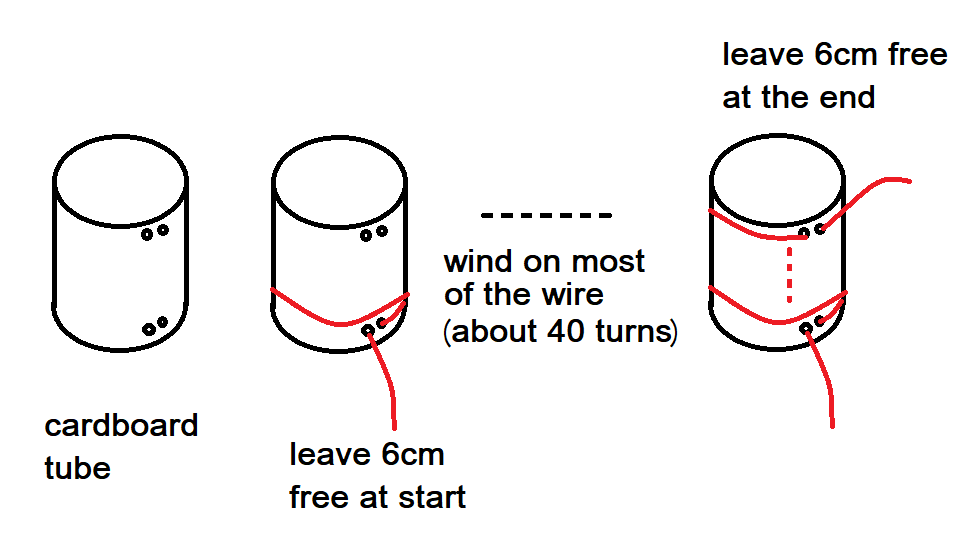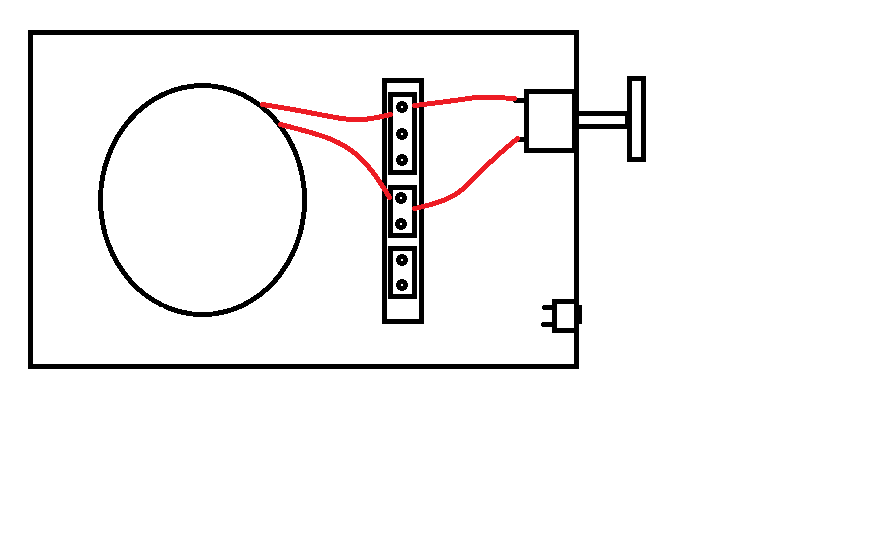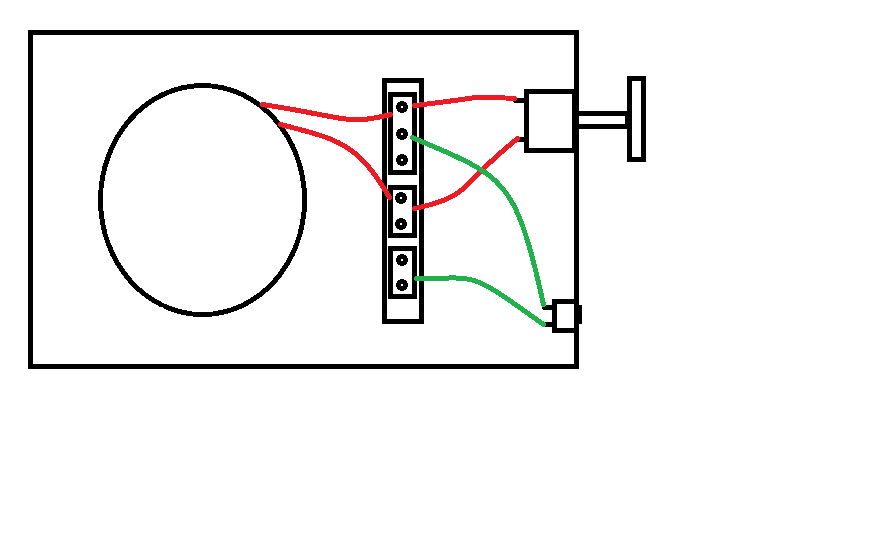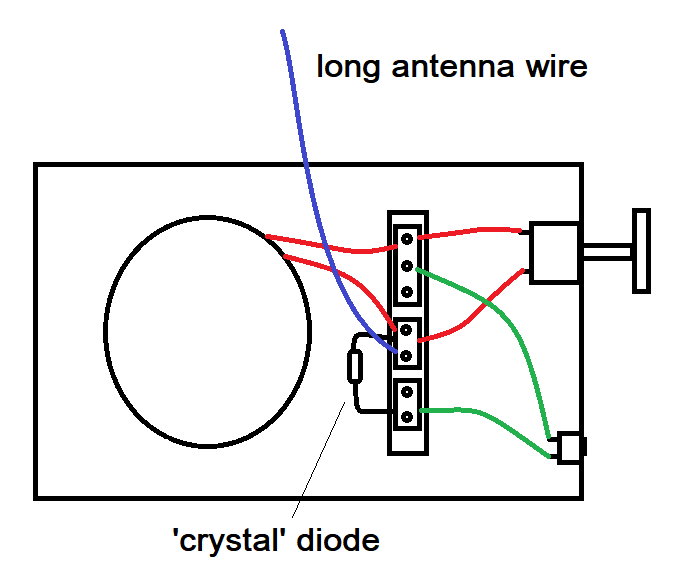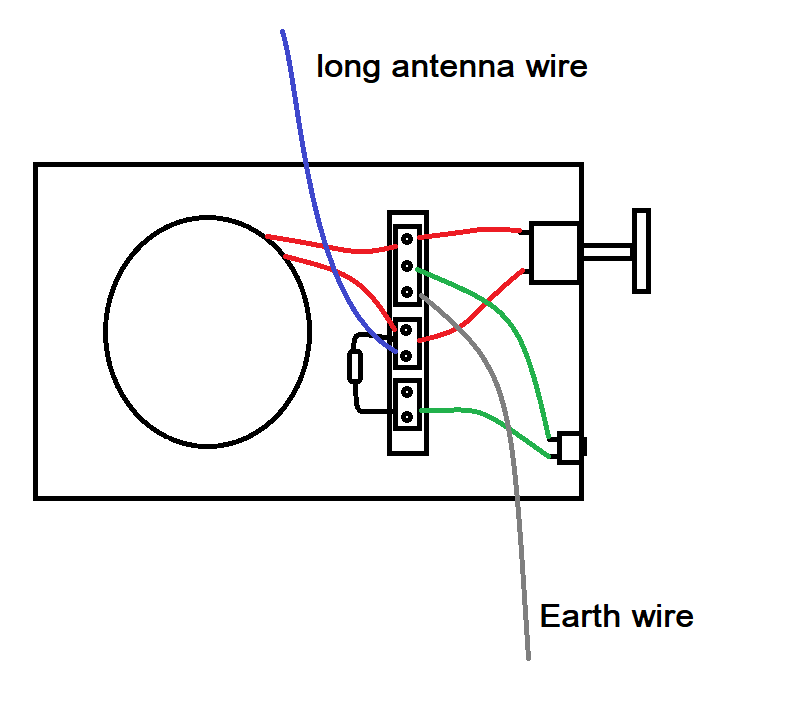Follow the directions below to make the radio:
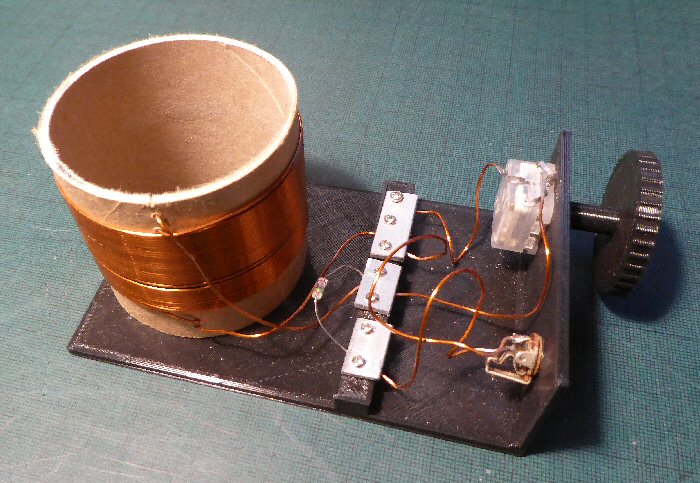
The complete 'crystal' set radio using a 3D printed base, 3D printed capacitor knob and a part 3D printed connector block
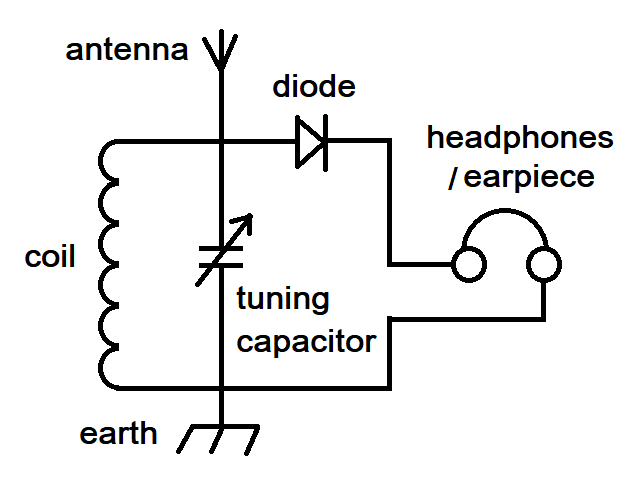
'crystal' set radio circuit diagram showing the coil, capacitor, diode, antenna, earth and earphone symbols.

The basic 3D printed base from which we are going to build our radio.
On the left we have a place for the large coil, on the right there is an up-right panel that holds the tuning capacitor and the earphone socket.
